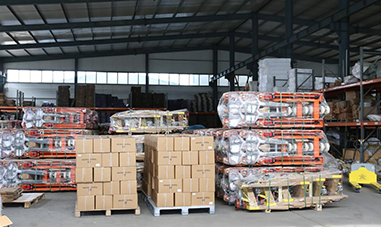


Understanding the Working Principle of Chain Hoists
Chain hoists are commonly used devices in various industrial and construction applications for lifting and moving heavy loads. These mechanical systems leverage the principles of physics and mechanical advantage, making them an essential tool in many sectors. To understand how a chain hoist operates, it is crucial to delve into its working principles, components, and the advantages it offers in lifting heavy objects.
Components of a Chain Hoist
A typical chain hoist consists of several key components the chain, the hook, the ratchet mechanism, and the drive unit. The chain is made of durable metal links, designed to withstand the weight of heavy loads. The hook is attached to the end of the chain and is used to secure the load being lifted. The ratchet mechanism allows for controlled lifting and lowering of the load, preventing it from slipping back down once raised. The drive unit, which can be manual or powered, provides the necessary force to operate the hoist.
Working Principle
The fundamental working principle of a chain hoist revolves around the concept of mechanical advantage. Essentially, mechanical advantage allows a user to lift a heavier load with less force by distributing the weight across multiple chain links. When the handle or motor of the hoist is turned, the chain moves through a series of gears and pulleys. The design of these components allows the user to lift loads significantly heavier than what could be achieved through direct lifting.
1. Manual Chain Hoists In manual chain hoists, the operator pulls on the hand chain, which engages the ratchet mechanism. This action lifts the load attached to the hook. The user can simply pull down on the chain, and the load will ascend as the gears turn. The ratchet prevents the chain from unwinding, ensuring that the load remains secure when lifted.

2. Electric Chain Hoists Electric chain hoists operate using a motor that automates the lifting process. The user can control the hoist using a pendant or remote control, providing ease of operation and enhancing safety. The motor drives the chain, effectively moving the load upward or downward. Electric chain hoists are particularly useful for lifting heavy loads quickly and efficiently in large warehouses or construction sites.
Advantages of Chain Hoists
Chain hoists offer numerous advantages that make them a popular choice for lifting heavy objects
- Efficiency Chain hoists can lift heavy loads with minimal effort, saving time and energy for operators. - Safety The ratchet mechanism ensures that loads remain secure while lifted, reducing the risk of accidents and equipment failure. - Versatility They can be used in various applications, from construction and manufacturing to automotive repair and warehouse operations. - Compact Design Chain hoists are generally lightweight and easy to transport, making them suitable for job sites where space is limited.
Conclusion
The chain hoist is an exemplary demonstration of how mechanical principles can be applied to solve practical problems in lifting and moving heavy loads. By harnessing the basics of physics—particularly mechanical advantage—chain hoists allow operators to manipulate weights efficiently and safely. Whether used in manual or powered forms, these devices continue to play a crucial role across multiple industries, reflecting the enduring relevance of well-engineered tools in our day-to-day operations. As industries evolve and the demand for efficiency persists, chain hoists will undoubtedly remain a staple in the world of heavy lifting, serving as a testament to human ingenuity in engineering and design.



